
Robots and artificial intelligence have been staples of pop culture for decades. But I can’t recall any time when there have been quite so many prominent robot- and AI-related projects released in such a short span. A period of just under nine months has seen the release of five movies and a new TV show with high production values, cutting across genres and styles, including action sequels and comic-book movies and thoughtful indie flicks and big-studio fluff.
Here are the projects I have in mind (spoilers ahead), ordered by their U.S. release dates:
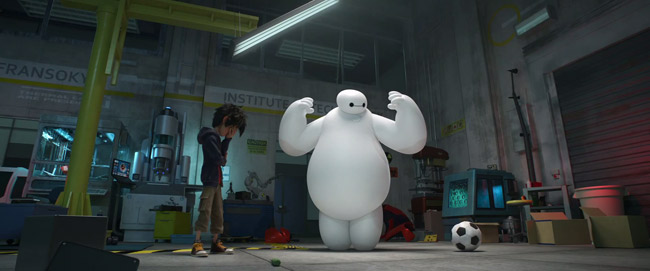 Big Hero 6 — November 7, 2014, the only animated film in the bunch, based on a Marvel comic. The movie features a roughly human-shaped robot, the adorably marshmallowy Baymax, which understands human speech but does not itself speak. The movie also involves a swarm of microbots.
Big Hero 6 — November 7, 2014, the only animated film in the bunch, based on a Marvel comic. The movie features a roughly human-shaped robot, the adorably marshmallowy Baymax, which understands human speech but does not itself speak. The movie also involves a swarm of microbots.
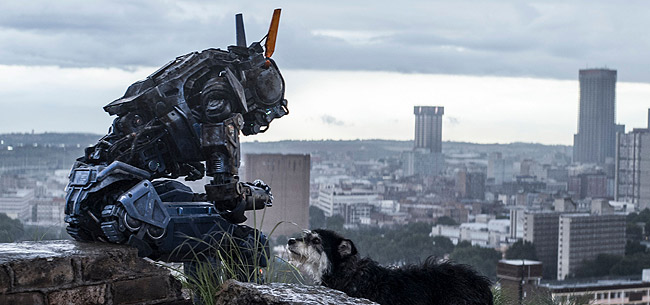 Chappie — March 6, 2015, the latest film from Neill Blomkamp, who made his name with two previous science-fiction action flicks. The film’s eponymous robot is human-shaped but metallic and electromechanical in appearance, as are the many police robots in the movie.
Chappie — March 6, 2015, the latest film from Neill Blomkamp, who made his name with two previous science-fiction action flicks. The film’s eponymous robot is human-shaped but metallic and electromechanical in appearance, as are the many police robots in the movie.
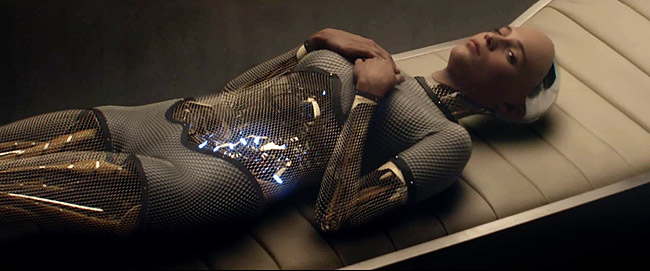 Ex Machina — April 10, 2015, a claustrophobic indie film from Alex Garland, featuring an artificially intelligent robot named Ava, which looks like and can passably interact with human beings. Ava, it is revealed, is the latest and most advanced in a series of robots created by a programming prodigy turned hermit CEO. (Update: Our Charlie Rubin discusses Ex Machina here.)
Ex Machina — April 10, 2015, a claustrophobic indie film from Alex Garland, featuring an artificially intelligent robot named Ava, which looks like and can passably interact with human beings. Ava, it is revealed, is the latest and most advanced in a series of robots created by a programming prodigy turned hermit CEO. (Update: Our Charlie Rubin discusses Ex Machina here.)
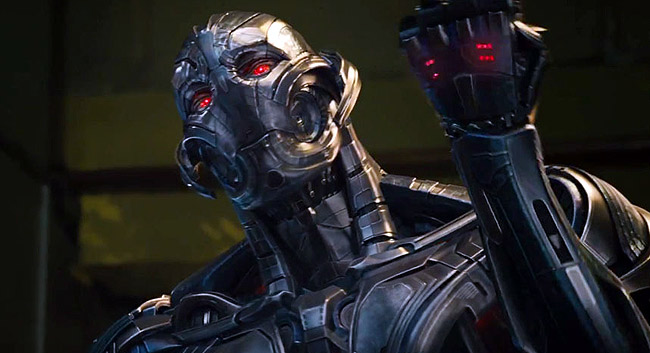 Avengers: Age of Ultron — May 1, 2015, the latest Marvel blockbuster sequel, this film features Ultron, a malevolent artificial intelligence inadvertently created by genius, billionaire, playboy philanthropist Tony Stark. Ultron inhabits several different human-shaped metallic robotic bodies over the course of the movie, and commands an army of similarly human-shaped metallic robots. We also get to see another robot, the Vision, which (in this movie incarnation) is created by merging a synthetic body that Ultron fabricated with Tony Stark’s household helpmeet J.A.R.V.I.S.
Avengers: Age of Ultron — May 1, 2015, the latest Marvel blockbuster sequel, this film features Ultron, a malevolent artificial intelligence inadvertently created by genius, billionaire, playboy philanthropist Tony Stark. Ultron inhabits several different human-shaped metallic robotic bodies over the course of the movie, and commands an army of similarly human-shaped metallic robots. We also get to see another robot, the Vision, which (in this movie incarnation) is created by merging a synthetic body that Ultron fabricated with Tony Stark’s household helpmeet J.A.R.V.I.S.
 Humans — June 28, 2015, the only TV series on this list, a joint production of AMC and the U.K.’s Channel 4. From the information available online, it appears that this series will involve robots that are being integrated into society — somewhat like the vision of the future depicted in the 2004 Will Smith movie I, Robot, except with robots that look more like humans. We’ll have to see whether this series, like that movie, involves bad guys and a corrupt corporation; there are only a few hints in the trailer.
Humans — June 28, 2015, the only TV series on this list, a joint production of AMC and the U.K.’s Channel 4. From the information available online, it appears that this series will involve robots that are being integrated into society — somewhat like the vision of the future depicted in the 2004 Will Smith movie I, Robot, except with robots that look more like humans. We’ll have to see whether this series, like that movie, involves bad guys and a corrupt corporation; there are only a few hints in the trailer.
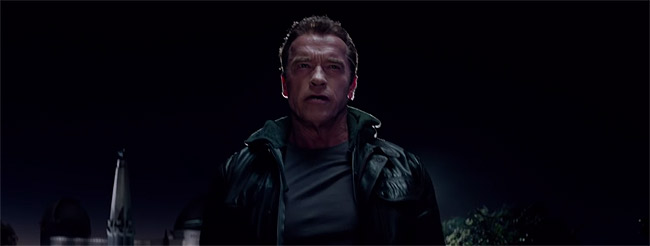 Terminator Genisys — July 1, 2015, a movie that is simultaneously a sequel and a prequel in the Terminator franchise. The trailers suggest that Arnold Schwarzenegger will be back as a T-800 (in fact, thanks to CGI, we’ll see an older and a younger version of Schwarzenegger’s T-800). We’ll also get to see at least one T-1000 (the liquid-metal Terminator). Presumably Skynet, the franchise’s evil human-destroying A.I., will be behind all the badness that goes down.
Terminator Genisys — July 1, 2015, a movie that is simultaneously a sequel and a prequel in the Terminator franchise. The trailers suggest that Arnold Schwarzenegger will be back as a T-800 (in fact, thanks to CGI, we’ll see an older and a younger version of Schwarzenegger’s T-800). We’ll also get to see at least one T-1000 (the liquid-metal Terminator). Presumably Skynet, the franchise’s evil human-destroying A.I., will be behind all the badness that goes down.
(I have left off this list at least one other recent movie, Disney’s colossal flop Tomorrowland, that involved robots but not centrally. Have I forgotten any other big ones?)
In the weeks ahead, we’ll be writing up some posts about these movies. But it is worthwhile to pause just to take in the very fact of this confluence — the robotic Zeitgeist as it has appeared on the screen. It has many causes, some obvious, and some rather more subtle. It does not mean that any of the scenarios portrayed in these movies will come to pass, let alone anytime soon. But fiction can sometimes have the effect of “softening up” the public, so that even movies that seem to depict dark or dystopian futures can ultimately serve more to excite than to warn.


I do not expect sentient AI in the foreseeable future. There is no scientific or technological reason for it being impossible. Its just that it is proving to be a more difficult challenge than most of AI advocates expect. Having said that, I will also say what we used to discuss in transhumanist circles when we first created the meme (in late 80's SoCal).
If one creates a sentient being, morally it is no different than creating another human. After a suitable period of learning and upbringing (analogous to childhood in humans) that sentient being must be granted the same rights of autonomy and self-determination that we grant to natural humans. To do anything else, that is, to make it some sort of slave or servant, is utterly immoral.
Sentience, by its very nature, is synonymous with and absolutely requires autonomy and self-determination. This is the fundamental moral issue with regards to AI.